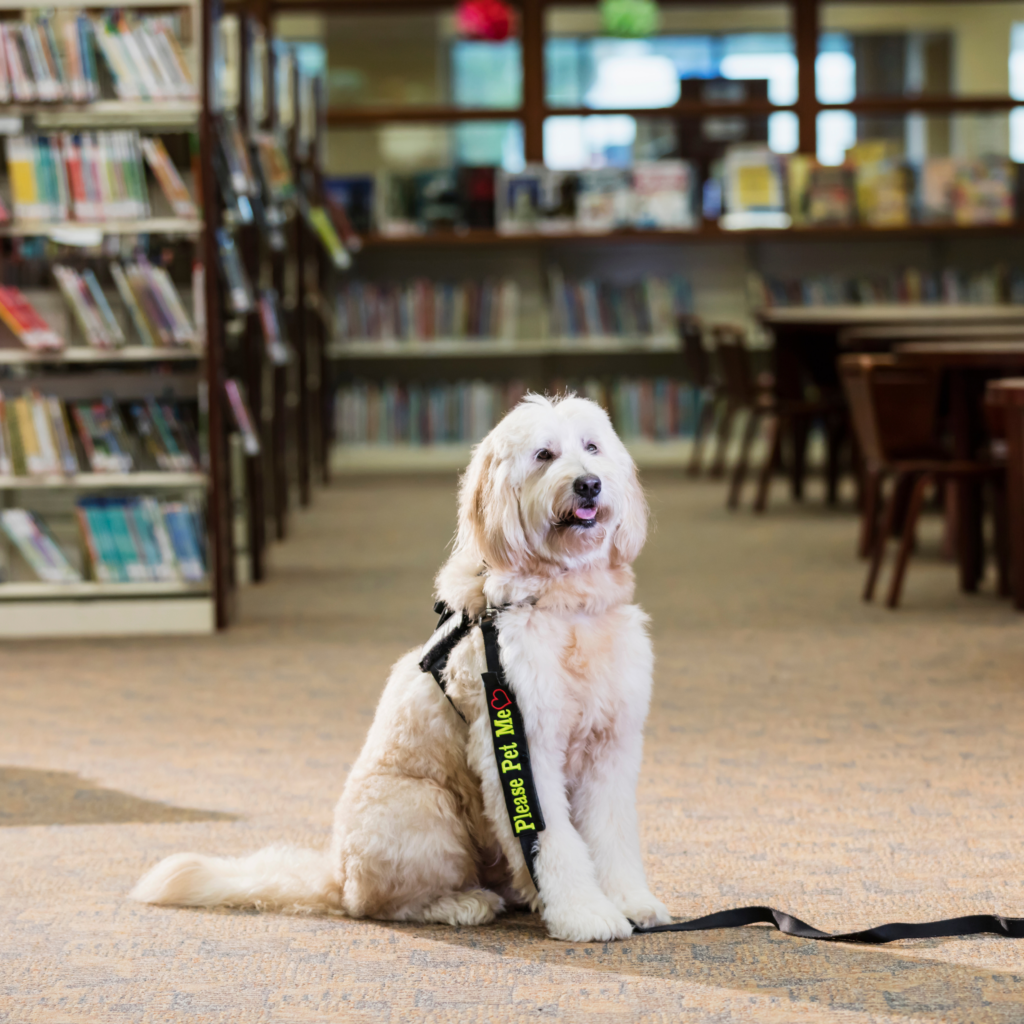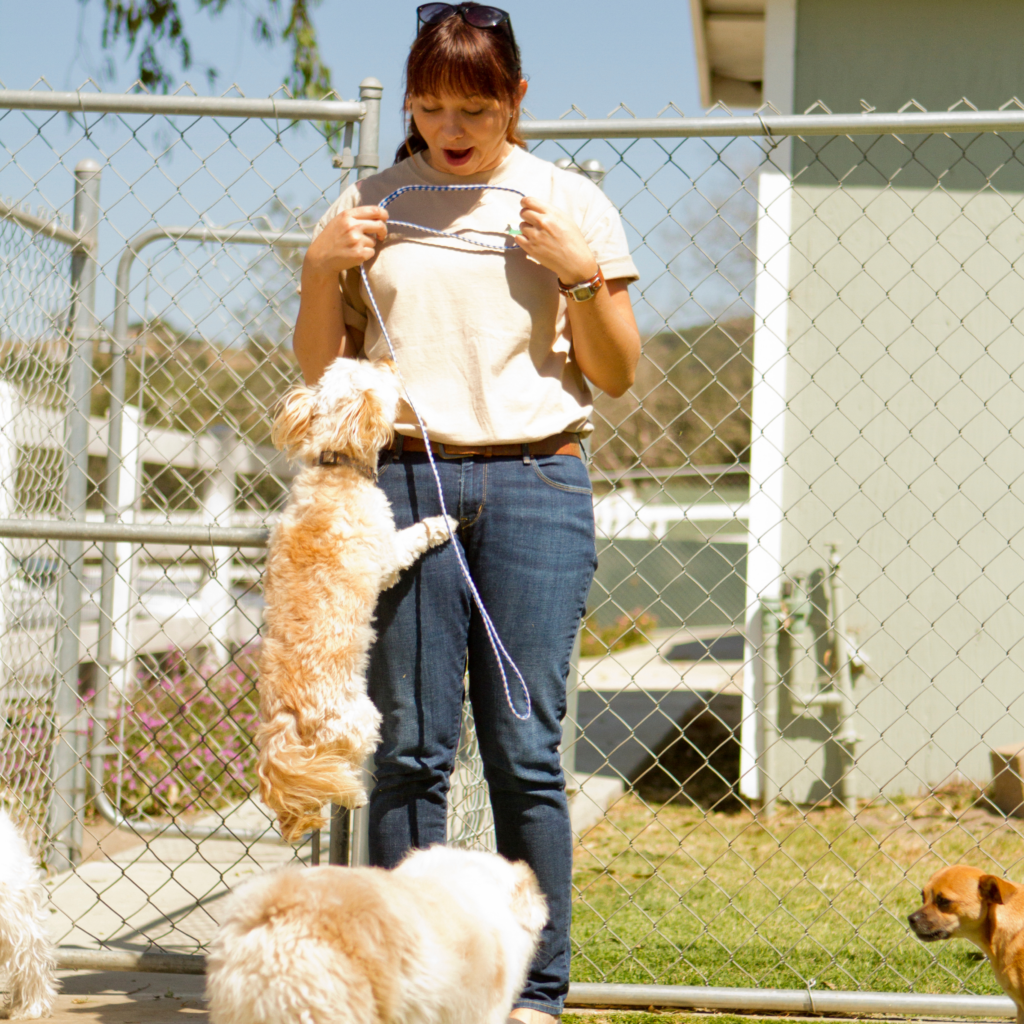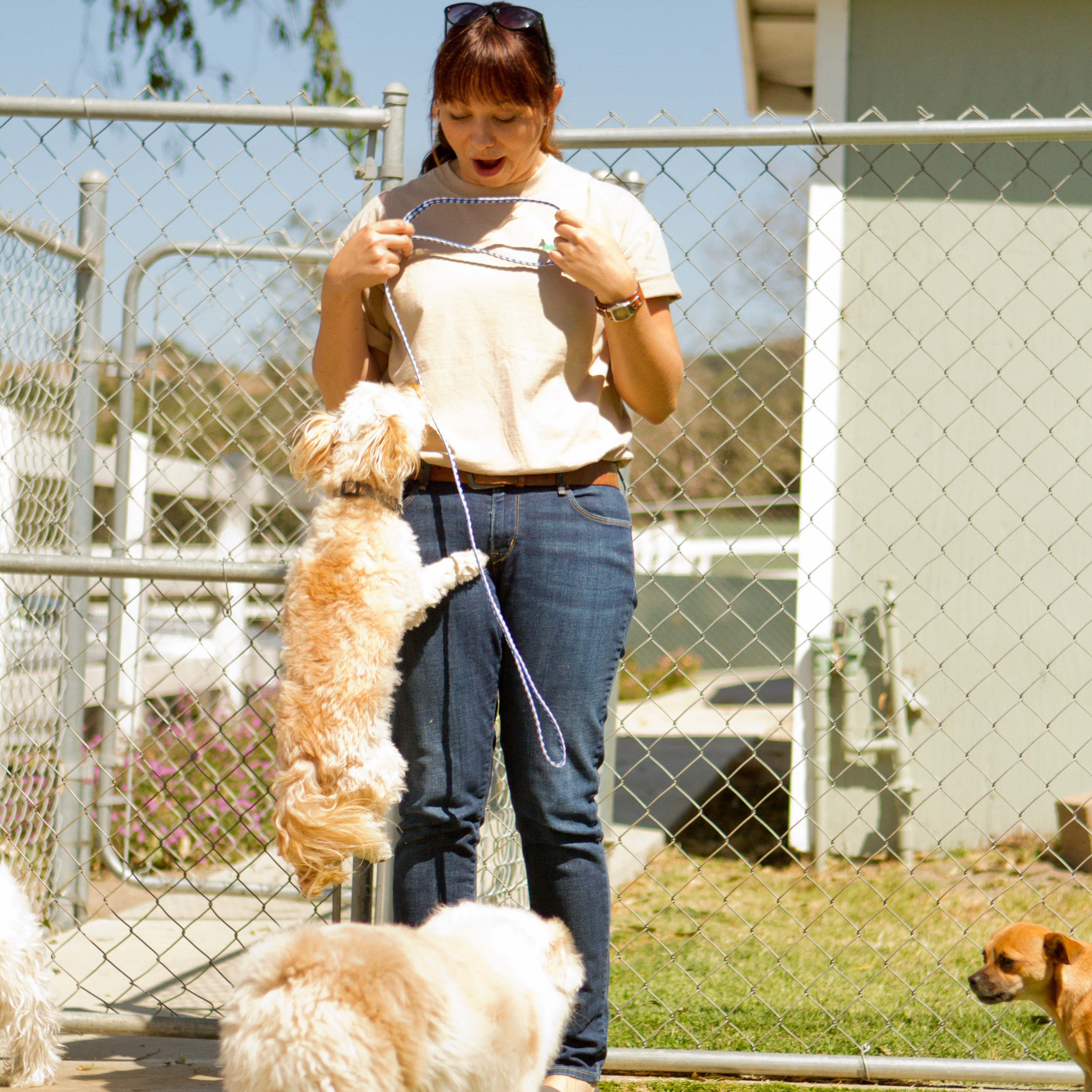January 11, 2024
Does your dog jump all over you when you get home? Does your dog jump on guests?
Jumping up is a common dog training problem. Why do dogs do this in the first place?
Dogs are descended from wolves. When wolves are pups, they lick their parents’ faces to stimulate the parent to regurgitate food for the pup.
Face licking is retained as a greeting into adulthood by wolves. Many dogs have retained face-licking as a greeting!
But don’t worry, your dog isn’t thinking “I can’t wait to lick my mom’s face so I can try whatever she had for lunch.” Rather, dogs simply feel the urge to gain facial proximity when they are excited to greet someone.

What can I do to stop my dog from jumping up?
An excited dog needs to do something when they see their favorite humans. In dog training, we can’t just stop a behavior, we have to replace it with something else.
So for jumpy dogs, we can replace jumping with other behaviors. Here are my two favorite examples:
- A hand target greeting
- Sit to be greeted
The greeting still needs to happen, it just happens when the dog is doing something other than jumping up. A hand target (the dog boops your palm with their snout) or sitting are two great options for greetings.

Stop the rehearsal of jumping for greetings
If we have worked together in York, PA for dog training or if you have attended on of my group dog training classes, you know that stopping the rehearsal of an unwanted behavior is always the first step!
The more a behavior is rehearsed, the stronger it gets.
Baby gates and leashes need to be utilized while we are actively training your dog to do an alternative behavior to jumping up. If you have guests over, the baby gate needs to go up so your dog doesn’t rehearse his favorite jumping up routine for the first 10 minutes of the visit.
Instead, you can keep your dog behind a baby gate during the early part of the visit. When your dog has calmed down a bit, get out your dog’s favorite toy. Have the guest play fetch or another game with your dog.
That way, the jumping up is not rehearsed and your dog still gets to interact with people.

Remember that a friendly dog is GOOD thing
Many of my clients are exasperated and embarrassed by their jumpy dogs. I get it! You want your dog to be able to participate in your life without that crazy pogo stick jumping.
It is important to always remember that jumping up is a friendly, happy dog behavior. The alternative is a dog who is fearful of guests and new people. Fearful dogs growl, lunge, snarl, and can also bite.
Remember that we don’t want to punish our dogs for being excited to meet people. Punishing social behavior isn’t a good idea. Instead, like we talked about earlier in the post, we replace the jumping with something else like a sit stay.
When nervous dogs jump up on guests
Most of the time, jumping up IS a social happy behavior. Sometimes, dogs who are suspicious of guests will jump up on them to investigate them or to keep them back.
Reading your dog’s body language is a critical skill here. Is your dog bouncy with a loose face and a neutral tail position? Do they happily take treats, have interest in toys, when guests come over. Are they eager to be pet and talked to by guests?
Or, do they cower, run away, have a closed mouth with a tight face? What is their ear position? Ears pressed back is a sign of fear and stress. If your dog sounds more like this, than jumping up is likely an investigative behavior intended to create distance from the guest.
Never punish a fearful dog. Reach out for help so you can address your dog’s fear before it worsens over time.
I felt it was important to mention this investigative jumping vs happy jumping, but remember, most dogs jump up as a social happy behavior.
Ready to get started?
If your dog is jumping up to greet you and your guests out of excitement, stop the rehearsal of the behavior with gates, leashes etc.
Train your dog to do an alternative behavior like a nose target or a sit stay. Reward them lavishly for keeping all four paws on the ground and for whatever alternative behavior you choose.
If you are local to York, PA and looking for a dog trainer we can work together in person. In-home dog training sessions are the fastest and most efficient way to address jumping up because the home is typically where the behavior happens.
Leave a Reply Cancel reply
Frustrated with reactive outbursts on walks?
Wondering if you will ever enjoy a "normal" walk with your dog?
you need this free guide!
follow along on instagram @modernmannersdogtraining
privacy policy
design by little hound creative
